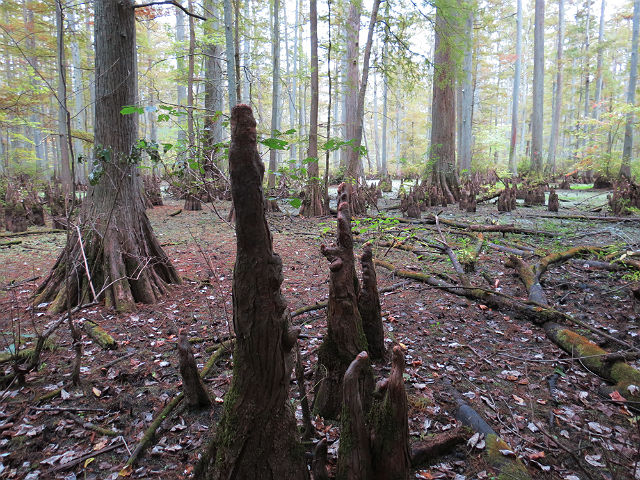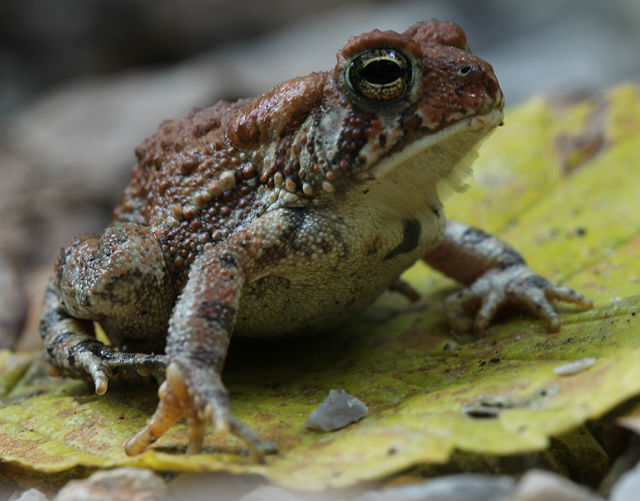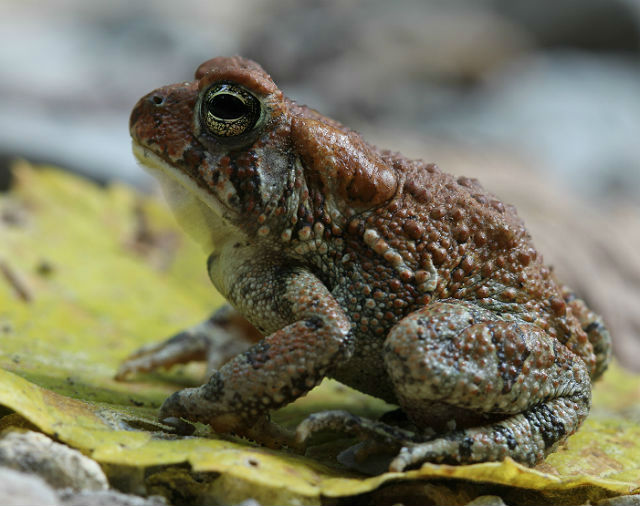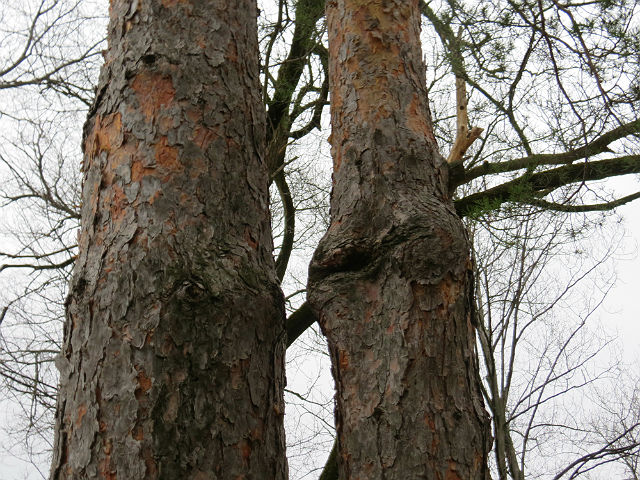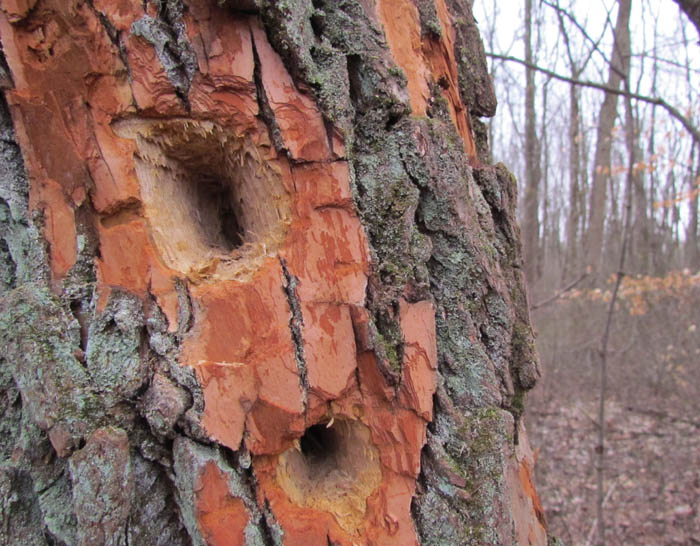I love toads and finding a new type while on a herping adventure is always a thrill. In October, while visiting southern Illinois, I came across a couple of examples of this little gem.
As the name implies, the Dwarf American Toad is rather small – about 1-1/2 to 2-1/2 inches. These creatures are often brick red in color without any distinct pattern. The bumps behind their eyes are called paratoid glands; they produce a foul-smelling, toxic chemical. This keeps some predators from trying to eat these toads.
These amphibians are found in most of the south central region of the United States. They live in habitats ranging from forests, open fields and pastures and even residential areas – as long as the habitat contains leaf litter, sandy or loamy soil for burrowing, moist hiding places, and an abundance of food.
Toads are most often seen and heard in the Spring when they are breeding. They are also seen frequently in the Fall when they look for new places to live and hibernate. They are mostly active at night.
Dwarf American Toad are predators and they eat a lot. Insects, spiders, earthworms, snails, and slugs make up most of their diet, but they will eat just about anything that fits in their mouths. They catch food by lashing out with their sticky tongues to grab prey. If the prey is large, they will use their arms to stuff it into their mouths.
This amphibian’s Latin subspecies name, charlesmithi is in honor of its discoverer, Charles Clinton Smith – an American naturalist and educator in the early 1900s.

